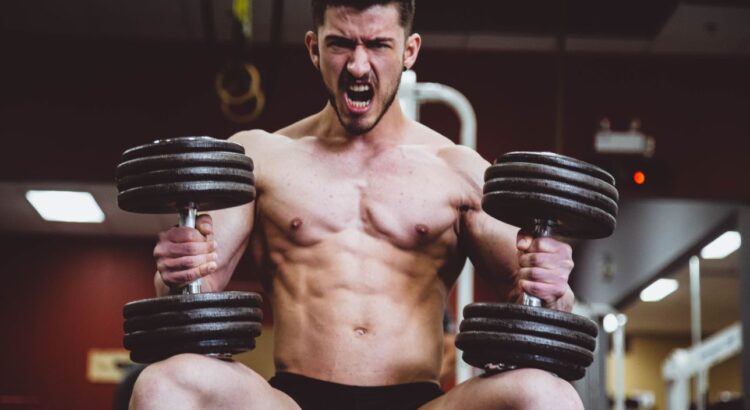Gynecomastia and the presence of extra chest fat in the region are frequently confused because both conditions contribute to the same cosmetic concern of having an undefined chest and the appearance of “man boobs.”
Gynecomastia is the abnormal growth of tissues and glands in the male breast. Gynecomastia can sometimes develop in men during adolescence and go away on its own over time, but some men get it later in life. This may be brought on by a variety of factors, including the use of specific medications and hormonal imbalances. The distinctions between gyno and chest fat will be discussed in this article. Please keep reading.
What Is Chest Fat?
The pockets of fat that collect in the chest and frequently give men the appearance of “man boobs” are referred to as “chest fat,” also known as pseudo-gynecomastia. We all carry fat in different areas of our bodies, with many men storing fat in their upper bodies and chest.
The upper body may become heavier than the lower body, resulting in a distorted body shape. As a result, most men are unhappy with the way their chests look and want to lose their excess chest fat.
What Causes Chest Fat?
Having too much body fat typically leads to chest fat. The quantity and distribution of body fat are influenced by our genetic makeup. However, leading a sedentary lifestyle, eating poorly, and exercising infrequently will all help the fat cells in the area to grow, making the chest fat appear more obvious.
What Is Gynecomastia?
Swollen male breast tissue is a common symptom of gynecomastia. The most frequent cause of this condition is typically reduced male hormones (more on this later). There are other potential causes, though.
Depending on the root cause, the most common symptoms of male gynecomastia are:
- Enlargement of the breast tissue
- Swelling
- Feeling lumps in the breast/chest
- Tenderness
- Chest discomfort
- Overweight or obesity
What Causes Gynecomastia?
Breast tissue is present in both men and women. Male breast tissue does not, however, develop during puberty as it does in women unless there is an imbalance in hormone levels, due to the different hormone levels between the sexes.
Hormonal Imbalance
In contrast to estrogen, which is the dominant hormone in women, testosterone predominates in men. Due to testosterone’s suppression of estrogen, men produce little of it. So, if men produce too little testosterone or too much estrogen, gynecomastia may result. Such hormonal imbalances can occur for many reasons:
Obesity
Obesity can lead to gynecomastia in addition to chest fat. Oestrogen is produced by fat cells, so your estrogen levels increase as your body fat percentage increases. Oestrogen thus promotes the growth of breast tissue.
Puberty
As puberty approaches, hormone levels are known to change. Teenage boys frequently experience gynecomastia as a result of this physical change. In this case, once you reach your 20s and your hormone levels stabilize, the gynecomastia will probably go away on its own.
Old Age
Due to the hormonal imbalances brought on by the aging process, gynecomastia affects older men more frequently. Men start to produce less testosterone as they reach their 50s and 60s. Additionally, as men age, their body fat tends to increase, producing more estrogen.
Medications
Gynecomastia can also be brought on by some medications. Generally speaking, these are drugs that raise estrogen levels in the body or have high levels of substances like prolactin.

Drugs that block androgens are also available. DHT and testosterone are examples of androgens. These not only function independently, but they also counteract estrogen’s negative effects.
Therefore, the effects of estrogen will be more noticeable if a person is taking a medication that blocks androgens like testosterone or DHT, and this can result in gynecomastia. Some examples of medications that may have gynecomastia as a side effect include:
- Some antianxiety medications
- Some antidepressant medications
- Some epilepsy medications
- Certain drugs used for the treatment of heart conditions such as digitalis
- Anti-androgen drugs
- Certain medications that are used to treat ulcers
- Certain drugs used in chemotherapy, specifically alkylating agents, which inhibit the growth of cancer cells and can also interfere with cell DNA
Although not technically medications, some herbal supplements, and essential oils, particularly tea tree oil and lavender oil, have also been linked to gynecomastia by some sources.
Medical Conditions And Illnesses
As was previously mentioned, certain hormone-related diseases and medical conditions can cause gynecomastia. This covers testicular cancer, pituitary gland cancer, and cancer of the adrenal glands. Additionally, lung cancer and an overactive thyroid gland may be to blame.
Excessive breast tissue can also result from other diseases and conditions. For instance, diseases specifically related to the liver, like liver cancer or cirrhosis of the liver (often brought on by alcoholism), can be the cause of the issue.
Chest Fat Vs. Gynecomastia: Evaluating Symptoms
How Much Pain Are You Feeling?
The pain and tenderness in the chest area from gynecomastia can range from slight to severe. It’s possible that your chest will always feel sore, swollen, and painful to touch. As a result of chest fast, this is much less likely to happen.
That being said, chest fat certainly can be painful for a variety of reasons unrelated to gynecomastia. When attempting to distinguish between the two, it is crucial to consider multiple factors.
How Does Being Fat Feel?
The majority of the time, chest fat will feel the same as fat elsewhere on the body, such as the stomach, thighs, or arms. Gynecomastia is much firmer to the touch than chest fat, which is typically softer.
Gynecomastia can sometimes feel hard or rubbery to patients. In fact, chest fat rarely results in a solid lump under the skin, so you might even feel one.
What Shape Is Your Chest?
The shape of chest fat is not particularly defined, and it frequently has a sagging or droopy appearance. However, gynecomastia typically has a rounder and more proportionate shape. It might have breast-like characteristics. The nipple-areolar complex may protrude farther from the chest than the rest of the chest in cases where there is less tissue.

How Does Your Body React To Exercise And Diet?
Your body’s reaction to diet and exercise is one of the best indicators of whether you have gynecomastia or chest fat. Despite the fact that every person’s body carries fat differently and that some areas of the body may burn fat more quickly than others, you should see at least some decrease in the size of your pectoral region with weight loss.
If you notice little or zero change – even after significant weight loss – this is a tell-tale sign of gynecomastia. When a person loses weight, the glandular tissue may occasionally become more visible as a result of lessening the surrounding fat that may have been hiding it.
Treatment Of Gynecomastia
Gynecomastia can occasionally go away on its own, but surgery is usually needed to treat it. Depending on the needs of the patient, surgery can be done under general anesthesia or intravenous sedation.
For proper chest contouring, liposuction as well as the excision of glandular tissue may frequently be required. In these situations, your surgeon will make a tiny incision in your skin and insert a tiny tube called a cannula.
Following that, suction is used to remove fat from the body. From the same incision, the glandular tissue can frequently be removed. Liposuction is rarely successful on its own, even in minor cases.
For more severe cases, your surgeon may need to use what is called “excision techniques” in which they remove both glandular breast tissue and excess skin via a larger incision. This is occasionally required if you want to move the nipple or areola during surgery to give the contour a more natural-looking shape.
Sagging skin is frequently a result of the chest’s decreased volume. Skin-tightening treatments like Renuvion may be helpful in many of these situations.
Your surgeon will go over aftercare instructions with you before surgery; it is important that you carefully follow them to prevent complications. The majority of patients require a recovery time of at least one to two weeks after surgery.
Treatment Of Chest Fat
Genetic factors may occasionally cause fat to accumulate in specific body parts, making diet and exercise ineffective. A liposuction is still an option in these circumstances. But most of the time, treating chest fat just with diet and exercise will work.
All body parts, including the chest, should experience less body fat as you lose weight. Spot reduction is a myth, but weight training can tone your chest and make the fat look less visible. You can achieve your aesthetic objectives by including exercises like bench presses and chest flies in your workout regimen.
Final Words
While it can be challenging to tell the difference between gynecomastia and chest fat, there are a few key signs that can help you do so. Make sure you use the services of a reputable cosmetic and surgery clinic when choosing surgery.
